Related Tags
Line 6 HX One review – does it deserve a place on every guitarist’s pedalboard?
The smallest Helix-derived pedal yet builds on the legacy of a venerable Line 6 classic, but with premium sounds of a modern high-end DSP modeller it could be the best of both worlds

Line 6 HX One. Image: Adam Gasson
Review Overview
Our rating
8
Our verdict
⊕ Simple user interface
⊕ Flux function is cool and inspirational
⊖ Display is too small
⊖ Drive tones are a little underwhelming
Taking the recipe laid down by the M5 and bringing it right up to date, the HX One is the new pedalboard essential for guitarists who need occasional sounds with a compact footprint.
$299/£249, line6.com
A bit over a decade ago, Line 6 released a pedal that was the answer to an awful lot of guitarists’ prayers – the M5 Stompbox Modeller. The M-series’ whole schtick was condensing the sounds of the hugely popular (and hugely cumbersome) 4 series modellers – the DL-4, MM-4, etc – into a more compact unit that could stick in front of a regular guitar amp and have all your sounds on tap.
The large format M13 and M9 units were popular enough, but it was the smallest of the bunch, the M5 that really started shifting numbers – and with good reason. People quickly realised that the M5, despite the ‘limitation’ of it only being able to offer one sound at a time, actually made it perhaps the ultimate ‘occasional sound’ pedal. With over 100 quality onboard effects, there weren’t many sounds the M5 couldn’t offer in a pinch – so instead of having to find space on your pedalboard for that univibe or phaser for one song in your set, you could simply plonk the M5 on there and call up the requisite sound before each song.
The concept was such a brilliant one that many guitarists still hold fast to their M5s to this day, despite the rapid evolution of effects modelling in the decade or so since its initial launch. Clearly Line 6 has realised that, as they’ve had another go at it in the shape of the brand new HX One that you see before you. I always loved the M5, and honestly couldn’t understand why every multi-effects brand didn’t make their own version of this compact solution, so I’m suitably intrigued to see what a decade of Line 6 progress has brought to the concept.
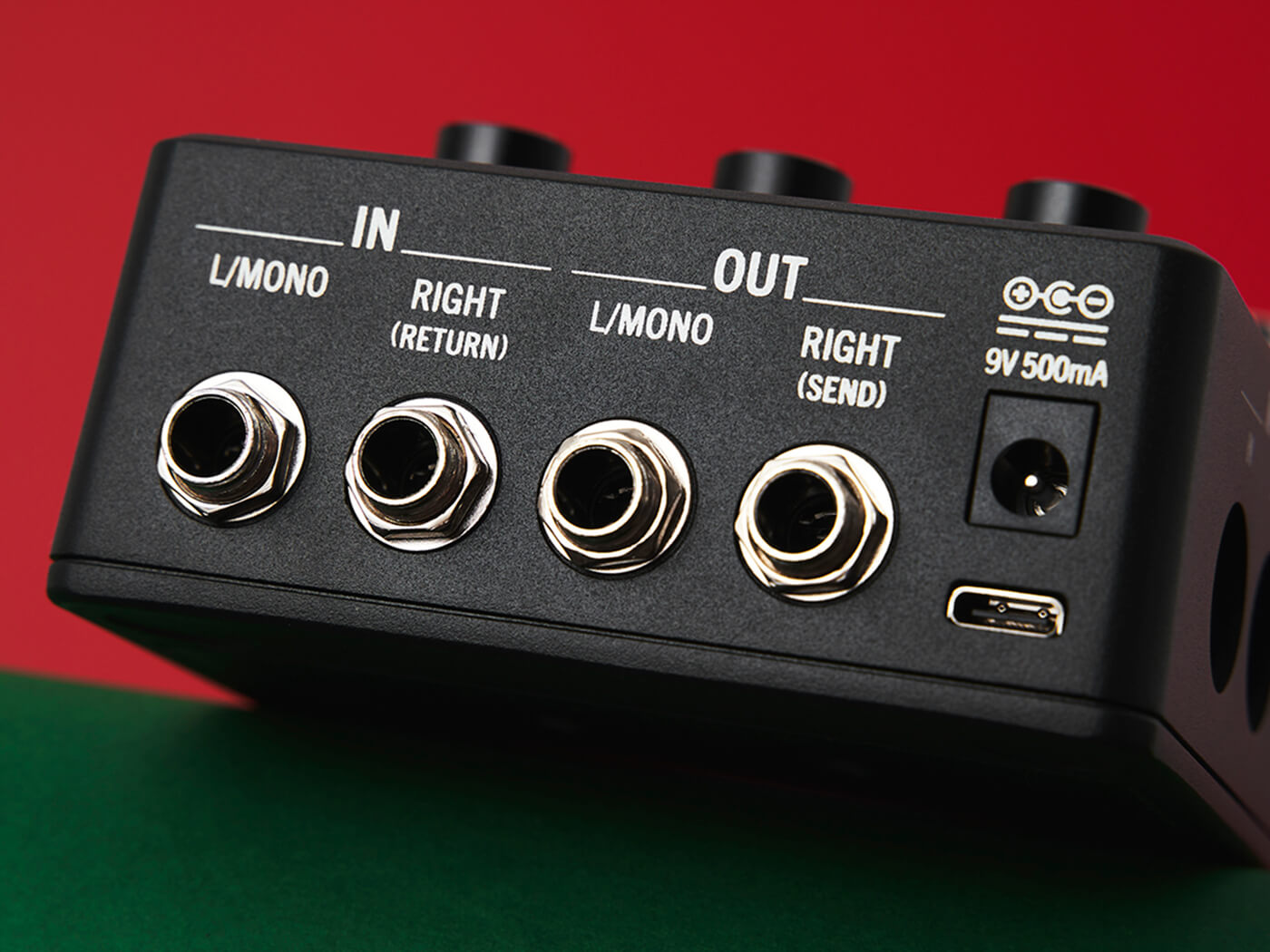
What is the Line 6 HX One?
The HX One is in the most basic of terms an even more scaled-down version of Line 6’s impressive HX Stomp pedal, which strips out the amp and IR modelling of the bigger version to focus purely on effects. The effects are all derived from the same high-end Helix technology found in the HX Stomp, Stomp XL and the big boy Helix modellers, and there are over 250 different sounds to choose from, running the gamut from drives and distortions, modulation, delay, reverb, pitch/synth sounds, wah/filter effects and a looper.
The top of the pedal contains stereo in and out jacks, plus the barrel socket for the supplied 500mA power supply, and the USB-C port for updates and pairing with the desktop editor/library software. The right side of the stereo jacks also double as an effects loop if you’re using them in mono, and there’s also a 1/4-inch jack on the pedal’s left-hand side for connecting an expression pedal should you wish to make the most of the pedal’s wah effects and the like. While many effects makers are using smaller I/O solutions for MIDI control, on the opposite side you’ll find a pair of full-size DIN sockets for your outboard control needs.
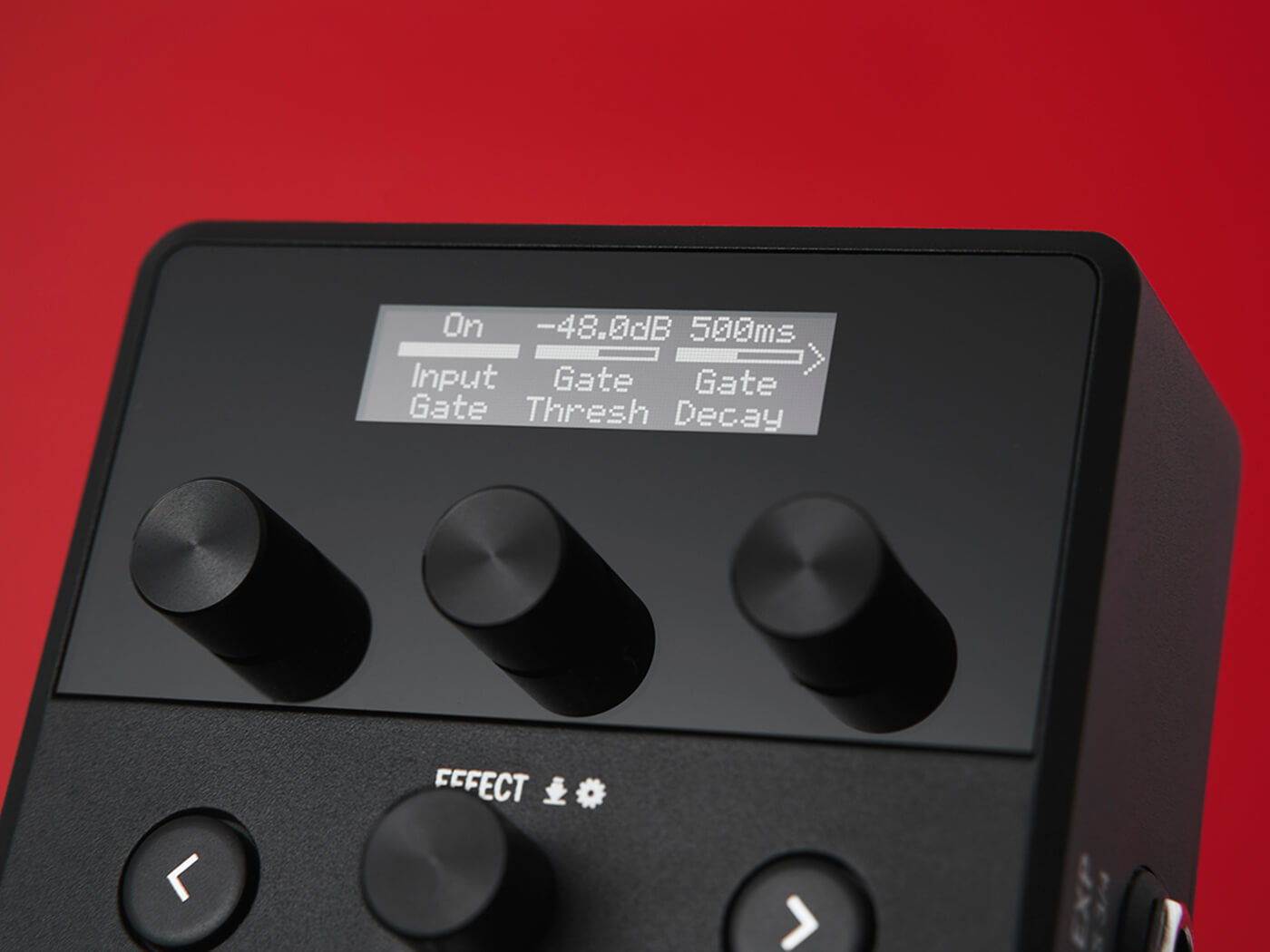
Is the HX One easy to use?
The biggest selling point of the M5 was its simplicity – rather than having to delve through endless parameters and menus to find the one that you want, everything could be found on the pedal itself, with the clear, colour-coded display reflecting each of the different effects types. Its bent-steel chassis also felt extremely rugged, and could take many many hours of stomping – as plenty of gig-ridden M5s could attest.
The HX One is a tad more stylish and compact than its predecessor, with a powder-coated steel chassis that feels very understated and reserved – almost as if, in its role as a do-it-all pedal, Line 6 doesn’t want it to attract too much attention.
On the front of the pedal you have a very small black and white OLED screen that displays the name of the current effect, as well as the names and values of the three parameters that can be tweaked by the three corresponding knobs beneath. If you have more than three parameters for each sound, you’ll get a little arrow either side of the screen and you can scroll over to these using the arrow keys either side of the main effects selection rotary.
Selecting the effects is as simple as scrolling the aforementioned rotary control, and you can quickly scroll through the bank of effects types – distortion, dynamics/EQ, modulation, delay, pitch/filter and looper – by pressing the knob in and scrolling. As with most multi-effects units, it’s harder to explain than it is to actually do, and in practice it’s all very intuitive – even for a multi-effects sceptic such as myself.
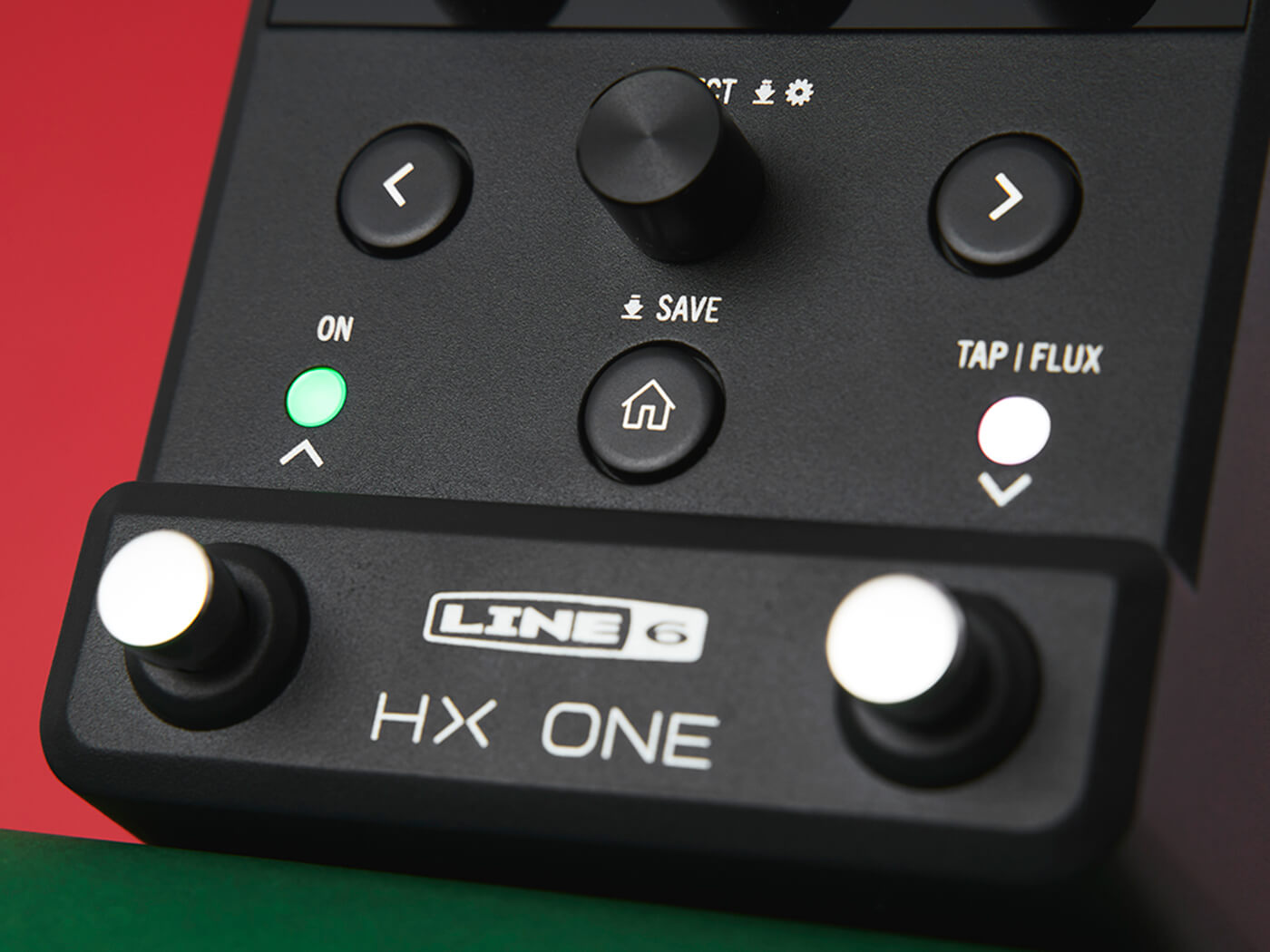
The effect you’ve chosen is selected by the left-hand footswitch, with its corresponding LED changed to the colour of the effect type in question, even when bypassed, so you can always check at a glance that you’re not about to engage the pitch-shifter when you were expecting to activate your mid-solo cathedral reverb. When the effect is engaged, the LED brightens significantly too, so there’s little chance you would mistake it for being on when it’s not.
The second footswitch controls an interesting new feature that Line 6 calls Flux – more on that later – but also tapping both at the same time turns them into preset up/down switches. There are 128 slots on tap, and with so many effects onboard, it makes a lot of sense to save your favourite sounds (or the ones you need for your setlist) in an order that makes them easily recallable.
This is pretty important because, despite clearly being designed to emulate the M5’s pedalboard Swiss Army Knife approach, it’s not the most gig-friendly user experience I’ve ever come across. That OLED is small – too small in my opinion – while it’s plenty bright and pin-sharp on a desk or in a well-lit room, trying to make out what sound you’ve selected when it’s on the floor in the dim and messy lighting environment of a gig is harder than you’d want it to be.
Identifying your current isn’t helped by the HX One’s weird aversion to colour. One of the cleverest things about the M5 was the way the backlit LCD display would change its whole colour so you could tell instantly what type of effect you were using – it was a concept that was refined by the Helix’s clever dynamic coloured footswitch labels, and by the coloured LED rings around the switches on the HX Stomp. Comparatively, the single tiny LED on the HX One feels like a retrograde step and one that’s much less useful. These are small quibbles in the grand scheme of things, and don’t compromise the generally clean and straightforward user experience – but still worth knowing about.
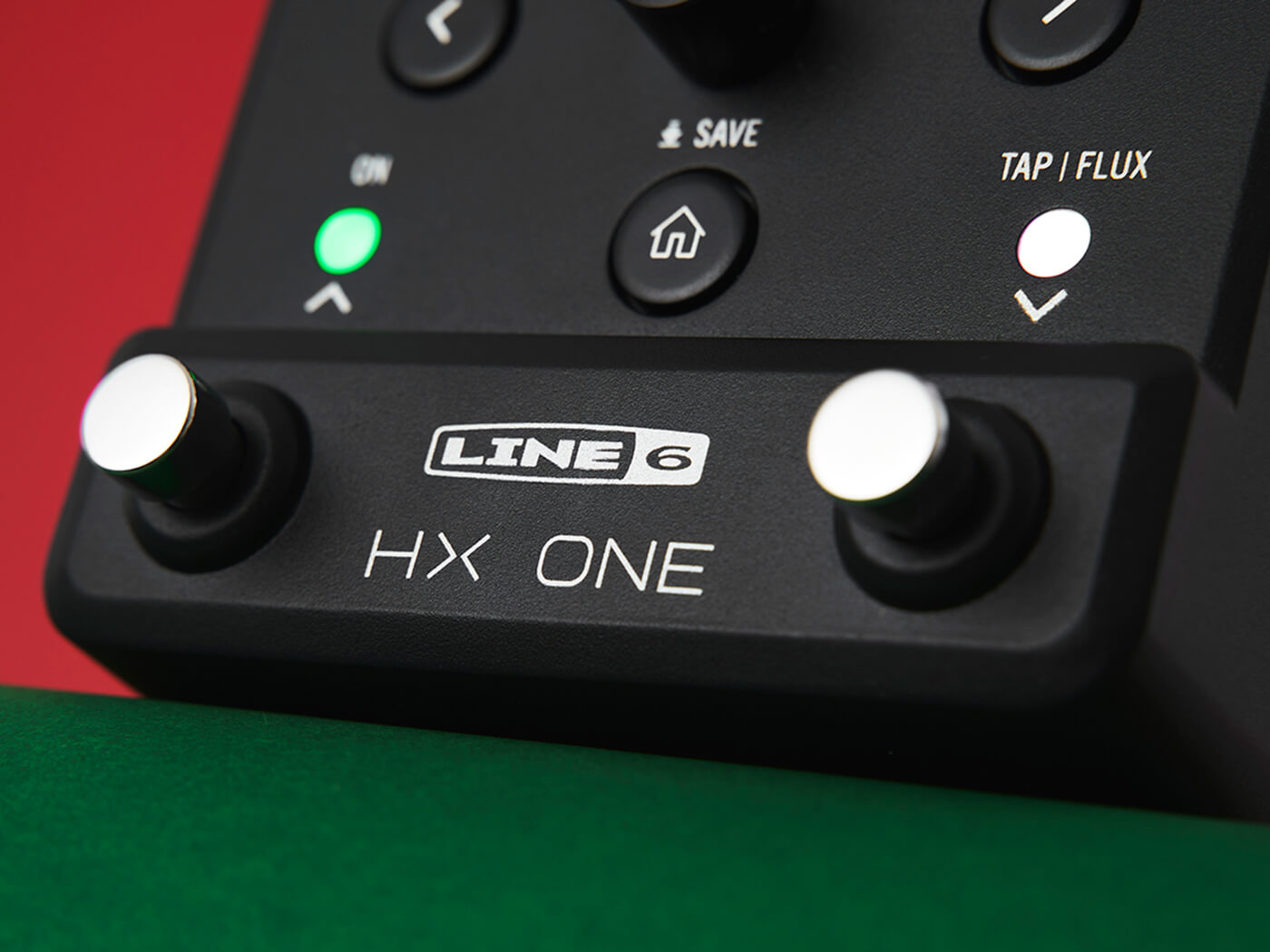
Does the Line 6 HX One sound better than the M5?
If you’ve experienced any of the Helix-derived pedals over the last few years, you’ll know exactly what to expect here – this is some of the most musically realised modelled sound you’ll find outside of the box, and especially in a unit at this price point. It’s striking also how much modelling in general has come on – from crystalline towering reverbs to gently throbbing tremolos, everything feels so much more alive and authentic on the HX One.
If I was going to find a fault, it’s linked to a common issue with modellers; the drive sounds. While there’s no doubt that the sounds here are streets ahead of the waspy rasps of the M5, there’s still something a little bland and lifeless with some of the dirt sounds here. It’s less of an issue with the higher-gain sounds, which capture the punch of saturation of a cranked amp impressively, but shows up a bit with the lower-gain drive models – if you want a Klon or a TS-type drive, you’re probably better off with a standalone pedal, but then you probably knew that already.
For its likely use however, these sounds are still perfectly usable – if you need a boost, fuzz or high-gain tone for a solo or a part of a song but don’t need it for anything else in your set, these sounds will do a perfectly acceptable job of it.
There are no such complaints with the modulation, delay and reverb sounds, however – from BBD chorus to endless digital ping-pongs, there are a huge amount of fun and exciting sounds to play with. One of my personal highlights is the Octo – a lush and decadent reverb paired with a high octave, that’s straight out of the Strymon book of ambient soundscapery, while the harmonic tremolo is bags of woozy western fun.
Undoubtedly then, the HX One is a huge leap forward sonically from the M5, and offers a truly premium effects experience here in 2024.
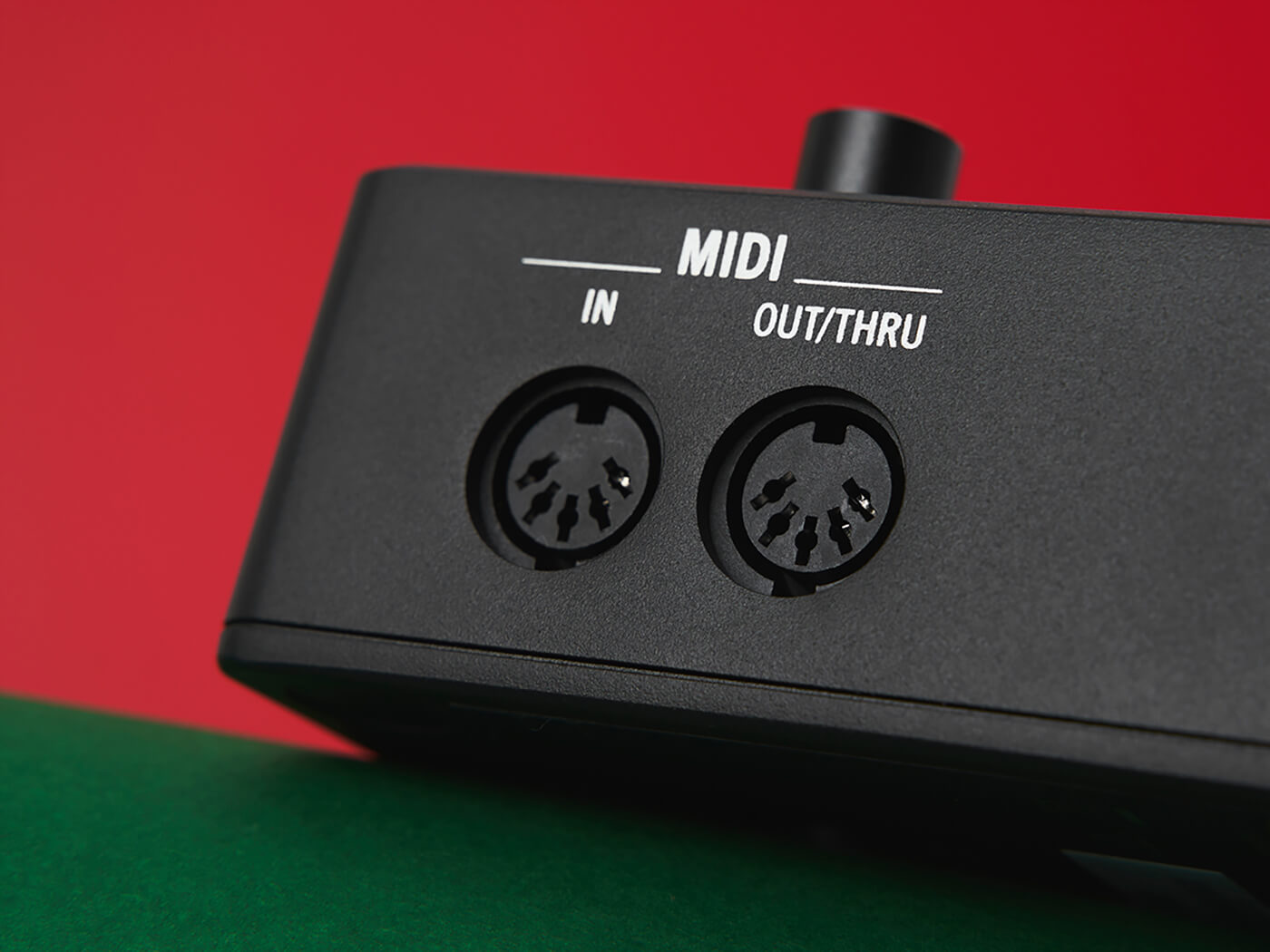
What does the Flux mode on the HX One do?
Okay, so you know I mentioned earlier that one of the footswitches on the HX One was reserved for the ‘flux’ function alongside tap tempo? Well giving it such prominence clearly shows that Line 6 wants to make a big song and dance about this – and rightly so. In essence, flux allows you to set two separate points of an effect’s parameter, and then ramps between those two points when you hit the switch.
So, let’s say you wanted your level or dirt to ramp up towards the end of a solo, you could set it on the flux switch and watch your guitar crescendo to a climax. Equally, you could easily set a chorus to get more lush, or have your delay repeats tip into self-oscillation. It’s kind of like a software version of OBNE’s Expression Ramper pedal, but significantly more straightforward to use in practice.
In order to set your flux parameter, simply set it to the level you want and click the corresponding knob (all the knobs are clickable), then hit the flux switch (the LED will switch from dim to bright) and then hit the level you want your parameter to reach, click again and you’re done. Then you just hit the switch to flux between those two parameters at will. When not in flux mode, this switch also does double duty as a tap tempo.
Is it the sort of feature that effects heads have been crying out for? Probably not, but it is fun in practice – the sort of thing that rewards experimentation with unexpected and occasionally inspirational results.
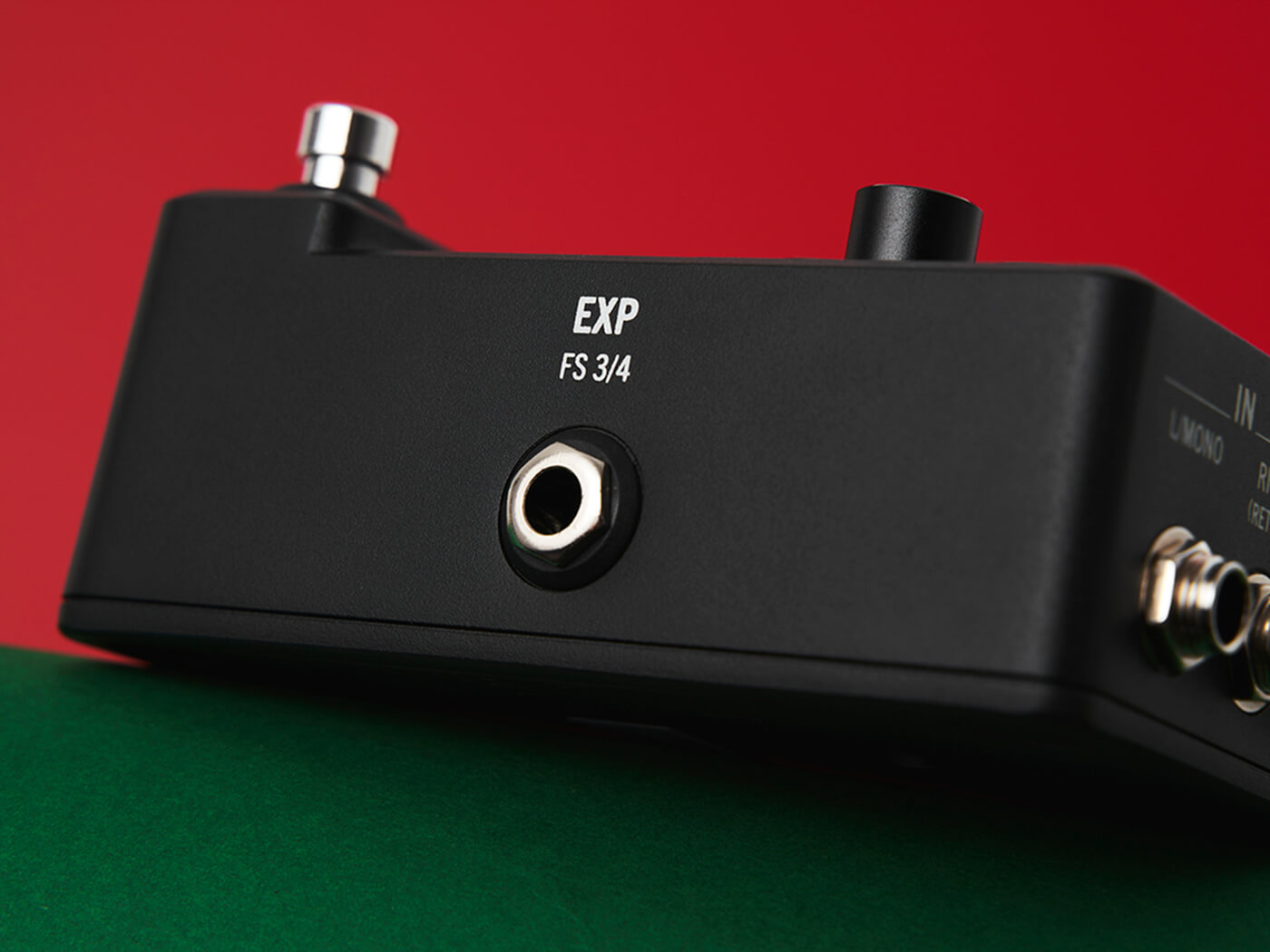
Is the Line 6 HX One worth buying?
A big part of whether this pedal will appeal to you will likely be down to what you thought of the M5. If you’re the sort of person who likes having the flexibility and variety of a multi-effects processor but doesn’t want the intrusive real estate of a full-sized unit, this is a great option. Equally, if you want more than one sound at a time, or need amp modelling and the like, this is clearly a pedal to swerve.
But ultimately this pedal is a fine spiritual successor to the venerable M5, bringing the ‘wild card’ multi-effects concept into 2024 with high-quality sounds and easy functionality – it might be the most important pedal you have on your ‘board.
Line 6 HX One alternatives
If you want an even more stripped-down multi-effects that still sounds great and is a lot of fun, Donner’s Jack White-approved Triple Threat ($99/£95) is an entry-level dream. There aren’t really many like-for-like one-shot multi-effects units out there for some reason, so other alternatives are probably something like TC’s Plethora X3 ($369/£311) or the pricey but superb Eventide H9 Max ($599/£569). If you want a VERY different approach to multi-effects, the Hologram Electronics Chroma Console ($399/£426) is a whole heap of fun.
